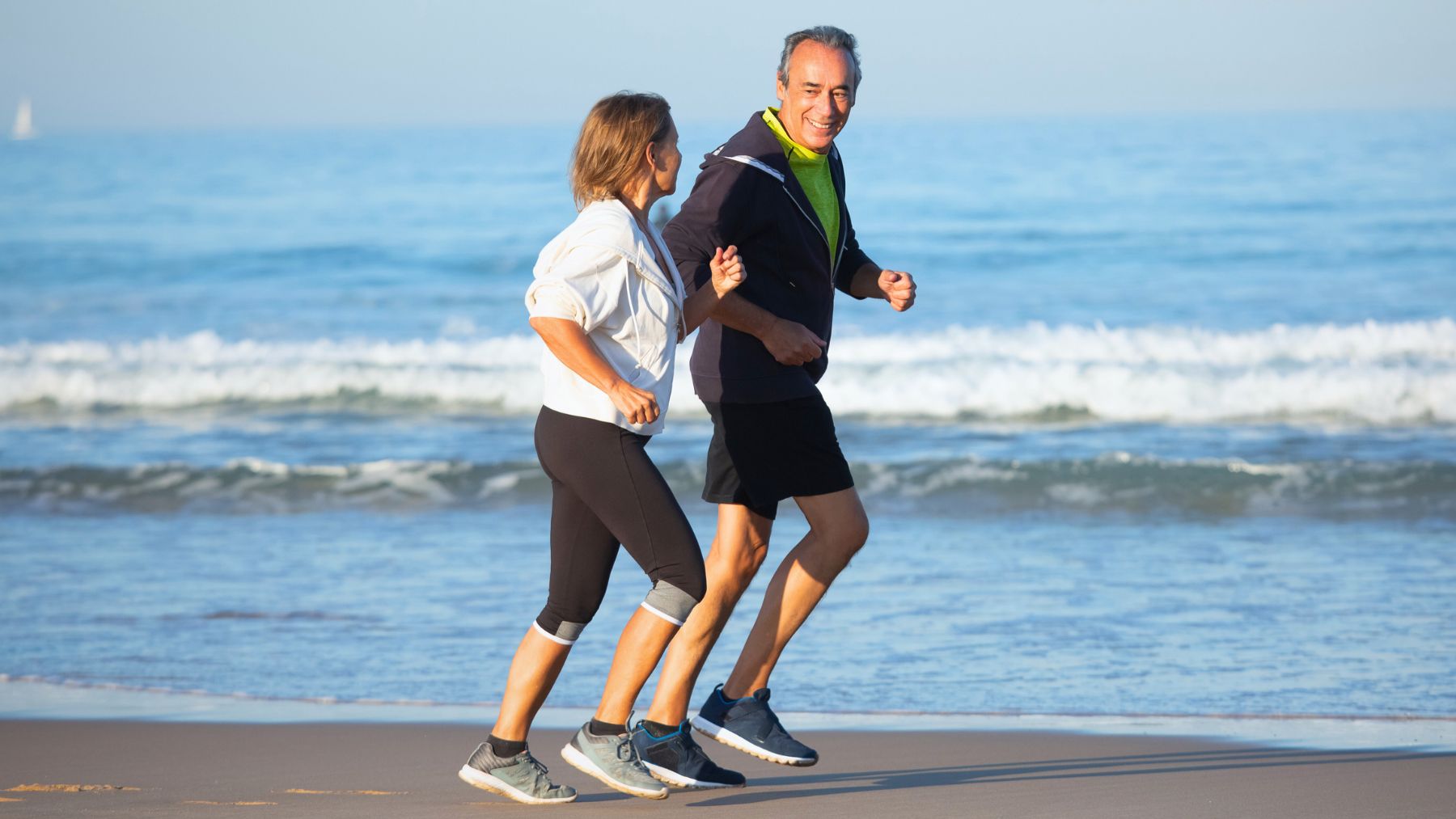Besides being a pleasant way to enjoy the coast, light jogging on the beach is an effective exercise that suits people over 60. The soft sand provides gentle resistance, making each step work your muscles harder without putting stress on your joints. Plus, being near the ocean adds a relaxing backdrop that helps keep you motivated and focused.
Here, we’ll explore how light running on the beach can help seniors improve strength, balance, and cardiovascular health. We’ll also share tips to run safely on sand, so you can enjoy this activity while avoiding injury. If you’re looking for a low-impact summer workout, this could be a great fit.
The benefits of light running on the beach for seniors
According to experts, running lightly on the beach is easier on your joints than running on pavement or concrete. The sand cushions each step, reducing impact on knees, hips, and ankles. For those over 60, who may have arthritis or joint concerns, this promotes comfort and prevents injuries. The softer surface also forces your muscles to work harder to maintain balance and propel you forward, strengthening your legs, core, and glutes.
The uneven texture of sand engages stabilizing muscles that don’t get the same workout on flat surfaces. This helps improve coordination and balance, which lowers the risk of falls. Besides, running by the ocean exposes you to fresh air and soothing sounds, which can reduce stress and improve mental clarity.
Running on sand burns more calories than running the same distance on a hard surface. This added effort can support weight management and cardiovascular fitness. It’s a way to build endurance while enjoying the outdoors. Starting with short sessions and keeping a moderate pace allows your body to adapt to this new terrain without strain.
Tips for seniors to run safely on the beach
Running on sand may feel different than your usual routine, so it’s important to be prepared. Here are some tips to help you stay safe and get the most from your beach runs.
- Consult your doctor or physical therapist before starting. They can assess your current fitness and joint health, and suggest ways to prevent injuries.
- Choose firmer sand close to the water’s edge. This area provides better support and is less likely to cause overexertion. Avoid running on very soft, dry sand.
- Wear trail running shoes or supportive sneakers with good grip. Protecting your ankles is important since uneven sand can twist your foot. Consider ankle braces if you have a history of sprains.
- Keep your runs short at first. Gradually increase distance and intensity over weeks as your muscles and joints get stronger. If you feel pain or excessive fatigue, take a break and rest.
- Warm up with stretches and walking before running. After your run, cool down and stretch to help prevent stiffness and soreness.
- Be mindful of tides and weather. Running at low tide offers the best terrain. Avoid the hottest parts of the day to reduce heat stress and stay hydrated.
- Use sunscreen and wear light, breathable clothing to protect yourself from sun exposure.
Running lightly on the beach offers a refreshing way for people over 60 to stay active this summer. With the right precautions and gradual progress, you can enjoy the benefits of this unique low-impact exercise while taking in the beauty of the coast.

